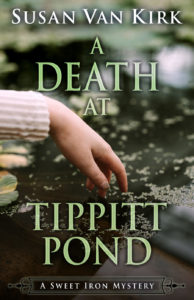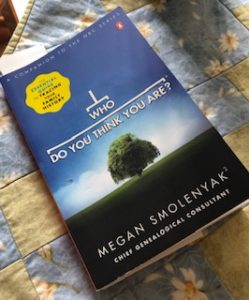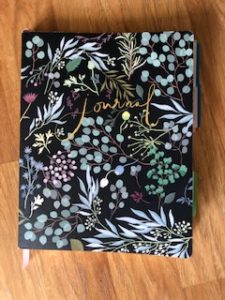I always find it interesting that readers wonder how authors write books. What process do they go through? How do they do this or that? How do they manage to write over 300 pages of words that fit together (we hope)? Do they plan out an entire series, or do they consider one book at a time? I thought I would try to answer a few of those questions as I write the second book in the Sweet Iron series of mysteries. Today I am going to concentrate on laying out times and places and early research, the steps that come after lots of long, hard thinking.
 My newest series takes place in a small town called Sweet Iron, Illinois, and it concerns the Tippitts, a family that can be traced back to the beginning of the town. The first book, A Death at Tippitt Pond, introduced the characters, situation, and setting in the present day. It begins the idea that Beth Russell, historical researcher and genealogist, will trace some of her illustrious ancestors on her biological family tree. It has a slight genealogical presence since she investigates the 1960s and 1970s. The continuing series will have a double plot–one in the present as well as one in the past. This means I picked some eras that pique my own interest in history–the pre-Civil War, the late 1800s, and the early 1900s during the suffrage debate.
My newest series takes place in a small town called Sweet Iron, Illinois, and it concerns the Tippitts, a family that can be traced back to the beginning of the town. The first book, A Death at Tippitt Pond, introduced the characters, situation, and setting in the present day. It begins the idea that Beth Russell, historical researcher and genealogist, will trace some of her illustrious ancestors on her biological family tree. It has a slight genealogical presence since she investigates the 1960s and 1970s. The continuing series will have a double plot–one in the present as well as one in the past. This means I picked some eras that pique my own interest in history–the pre-Civil War, the late 1800s, and the early 1900s during the suffrage debate.
However–and this is important–the focus of each book will be on mystery with history and genealogy as the context. I can hear my editor reminding me of that in my head each time I write. “Make the mystery the focus.”
I decided very early that the interest in the second book–now called “Book Two”–will be an ancestor I mentioned in A Death at Tippitt Pond. Jefferson Webster Tippitt, who was Beth’s uncle in the present day, was named for the man who built Tippitt House. William Webster Tippitt (nickname Webb), came with the second group of settlers to Sweet Iron in the 1840s. He not only built Tippitt House, but he also began the frontier newspaper for the town. I had to figure out, using math, that he would be the third great-grandfather of Jeff Tippitt. This means I had to lay out a timeline that would estimate the years in between 1809, when Webb was born, and Jeff’s birth in 1948. In between, I jotted down the names of other characters and historical periods I’d like to explore. It’s necessary to do this so you won’t end up with people along the line having children when they are 10 or 70. Besides using math to lay this out, the research would help with boxing out the years for each book. I would make a decision about which years to cover in the 1850s and 1860s in Book Two.
The focus of WW Tippitt’s contribution to this series will be prior to the Civil War when the Underground Railroad was in operation. This means a conflict over the issues of slavery, anti-slavery, and abolitionist thinking. It also raises many questions for research. How did printing presses work back then? What kind of stores would be present in a frontier town in the 1850s? What did people wear or eat? What parameters enclosed the lives of women? This is only a beginning. The problem with both research and genealogy is that your curiosity sends you running around in circles. One idea makes you curious about another. An author will do far more research than she’ll ever use in a book, but the wider the research, the more understanding she has, and the more stimulation for her brain when it comes to interesting details. In my case, I set a deadline for stopping the research and organizing the plot and characters. Even then, I’ll have to pick up some additional research details when the plot needs them.
operation. This means a conflict over the issues of slavery, anti-slavery, and abolitionist thinking. It also raises many questions for research. How did printing presses work back then? What kind of stores would be present in a frontier town in the 1850s? What did people wear or eat? What parameters enclosed the lives of women? This is only a beginning. The problem with both research and genealogy is that your curiosity sends you running around in circles. One idea makes you curious about another. An author will do far more research than she’ll ever use in a book, but the wider the research, the more understanding she has, and the more stimulation for her brain when it comes to interesting details. In my case, I set a deadline for stopping the research and organizing the plot and characters. Even then, I’ll have to pick up some additional research details when the plot needs them.
 Where to start? For now, let’s focus on genealogy research and leave the more-detailed history for the next post. I have a wonderful friend named Eileen who know everything about genealogy. I know just the basics, so when I need help, she is on the spot. As far as basics, I use general books about genealogy to fill in my knowledge. Again, I only use genealogy to support the premise of the books–that Beth is tracing her ancestors. This time, I’m especially interested in tracing slave ancestors along with Beth’s. I discovered that in 1850, the census might show the number of freed or owned slaves, but not by name. They would be listed by age, gender, and color. The 1870 census was the first to list former slaves as citizens. A freed slave prior to 1870 might be listed in a separate census under his/her own name, but sometimes they are missing. This makes it quite difficult to get information prior to 1870 on slaves. As I write the second Sweet Iron book, I must think about whether to add 1850 characters who are related to current-day bi-racial or African-American characters in the first book.
Where to start? For now, let’s focus on genealogy research and leave the more-detailed history for the next post. I have a wonderful friend named Eileen who know everything about genealogy. I know just the basics, so when I need help, she is on the spot. As far as basics, I use general books about genealogy to fill in my knowledge. Again, I only use genealogy to support the premise of the books–that Beth is tracing her ancestors. This time, I’m especially interested in tracing slave ancestors along with Beth’s. I discovered that in 1850, the census might show the number of freed or owned slaves, but not by name. They would be listed by age, gender, and color. The 1870 census was the first to list former slaves as citizens. A freed slave prior to 1870 might be listed in a separate census under his/her own name, but sometimes they are missing. This makes it quite difficult to get information prior to 1870 on slaves. As I write the second Sweet Iron book, I must think about whether to add 1850 characters who are related to current-day bi-racial or African-American characters in the first book.
My curiosity led me to discover a couple of other thoughts about the census. After 1850, the census records are only made public every 72 years, so the most recent census to be made public is 1940, before I was born. That came out in 2012, and 1950 will be available in 2022. Also, the biggest leap in recorded information was in 1880, but the 1890 census was mostly (99%) destroyed by a fire at the Department of Commerce. This means Beth must stay away from that census year to be accurate.

I use this journal for research ideas and notes
Finally, to begin the historical research, I need some general sources of information about life in the 1850-1860 window. I began with Greenwood Encyclopedia of Daily Life in America (1850-1861) and also American Eras (Westward Expansion 1800-1860.) I should mention here that much of the research I do happens at Hewes Library on the Monmouth College campus here in Monmouth, Illinois. I also read a recently-published book by David McCullough called Pioneers. It described the settling of Ohio, but many of the details about the routes they took and the hardships they faced were also applicable to Illinois.
In the next post, I’ll describe the more specific research to learn details about this period of time for the second book in the Sweet Iron series, and how I created a timetable to help me with the events my characters might have known about and discussed.
